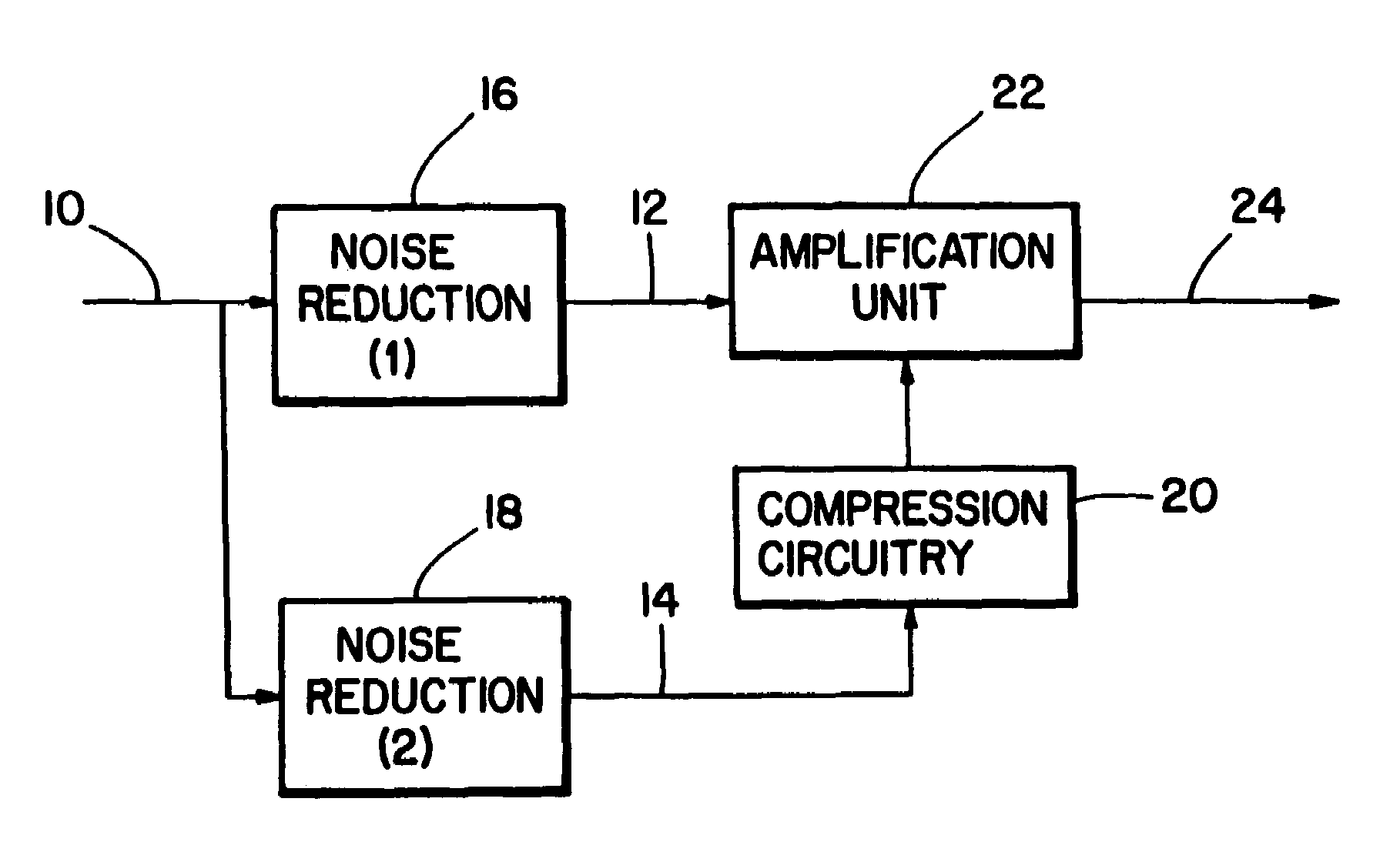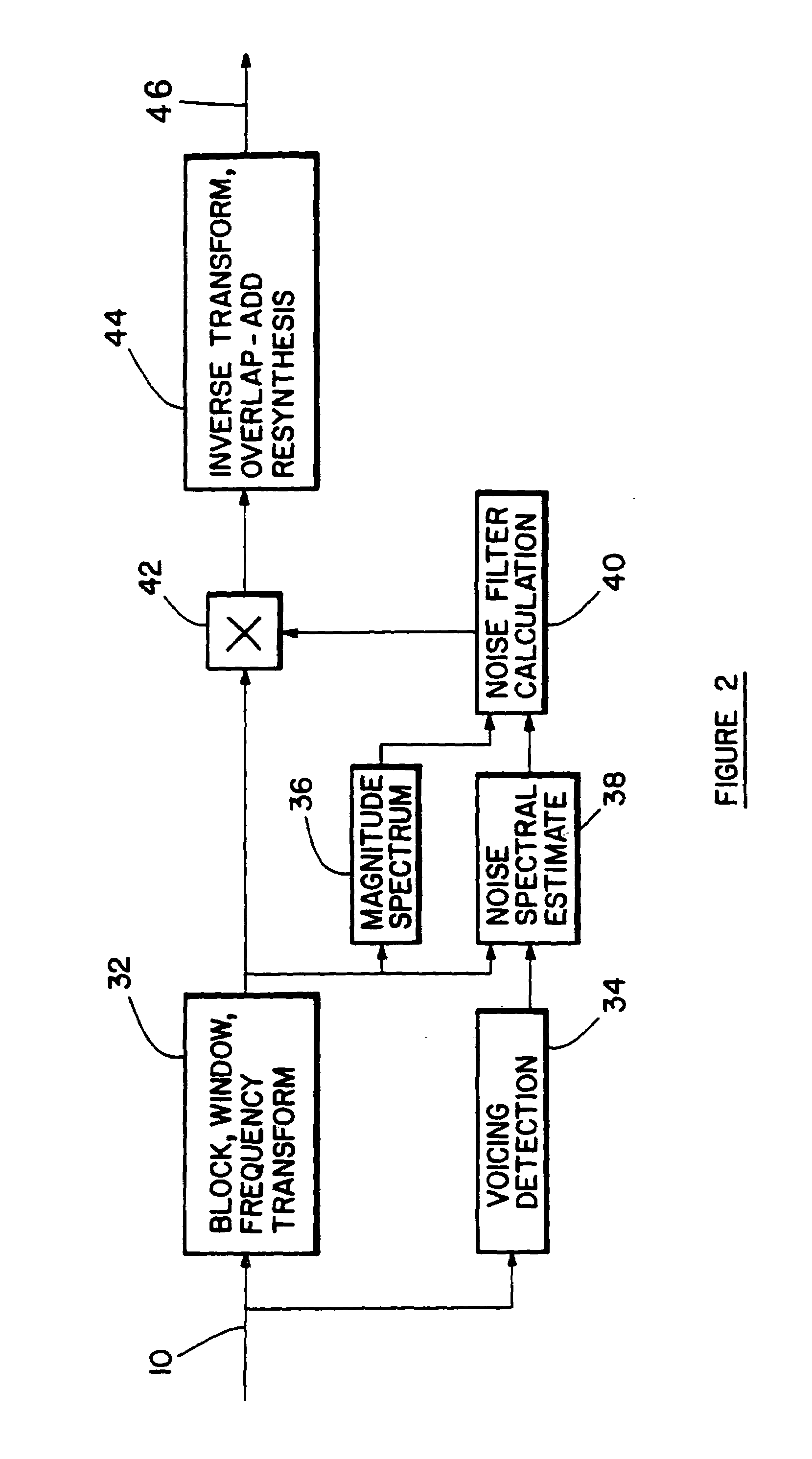Method and apparatus for noise reduction particularly in hearing aids
a technology of noise reduction and hearing aids, applied in the field of noise reduction, can solve problems such as problems such as problems such as confusion of desired signals with noise, and the inability to meet the needs of all listening situations, and achieve the effect of boosting speech, not boosting noise, and reducing the amount of boos
- Summary
- Abstract
- Description
- Claims
- Application Information
AI Technical Summary
Benefits of technology
Problems solved by technology
Method used
Image
Examples
Embodiment Construction
[0032]Referring first to FIG. 1, there is shown schematically a basic strategy employed by the present invention. An input 10 for a noisy signal is split into two paths 12 and 14. In the upper path 12, the noise reduction is effected as indicated in block 16. In the lower path 14, noise reduction is effected in unit 18. The noise reduction unit 18 provides a cleaner signal that is supplied to compression circuitry 20, and the compression circuitry controls amplification unit 22 amplifying the signal in the upper path to generate an output signal at 24.
[0033]Here, the position of the noise reduction unit 18 can advantageously provide a cleaner signal for controlling the compression stage. The noise reduction unit 18 provides a first generating means which generates an auxiliary signal from an auxiliary noise reduction algorithm. The auxiliary algorithm performed by unit 18 may be identical to the one performed by unit 16, except with different parameters. Since the auxiliary noise re...
PUM
 Login to View More
Login to View More Abstract
Description
Claims
Application Information
 Login to View More
Login to View More - R&D
- Intellectual Property
- Life Sciences
- Materials
- Tech Scout
- Unparalleled Data Quality
- Higher Quality Content
- 60% Fewer Hallucinations
Browse by: Latest US Patents, China's latest patents, Technical Efficacy Thesaurus, Application Domain, Technology Topic, Popular Technical Reports.
© 2025 PatSnap. All rights reserved.Legal|Privacy policy|Modern Slavery Act Transparency Statement|Sitemap|About US| Contact US: help@patsnap.com



